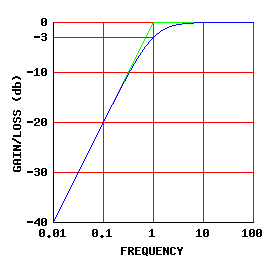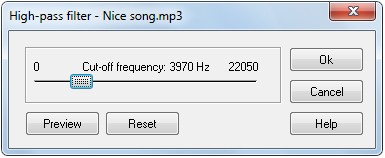A high-pass filter (HPF) is an digital implementation filter that passes high-frequency signals but attenuates (reduces the amplitude of) signals with frequencies lower than the cutoff frequency. High-pass filters have many uses, such as blocking DC from circuitry. They can also be used in conjunction with a low-pass filter to make a bandpass filter.

Sound below the cutoff frequency is not eliminated but increasingly attenuated as the frequency falls further below the cutoff. The steepness of the attenuation is set by the rolloff value. For example, with a rolloff of 6 dB per octave, the sound decreases by 6 dB for each octave below the cutoff frequency (an octave below is half the frequency).
It is hard to design a pass filter with a sharp cutoff, so the cutoff or corner frequency defines the point at which the audio is reduced by 3 dB. Thus there will also be a small and decreasing amount of attenuation just above the cutoff frequency.
High-pass filter controls

The only control for the high pass filter is its cutoff frequency. This varies from 0Hz to (Sampling rate)/2.
|
Copyright (c) 2013 AudioDope team. All rights reserved.
|
|
What do you think about this topic? Send feedback!
|